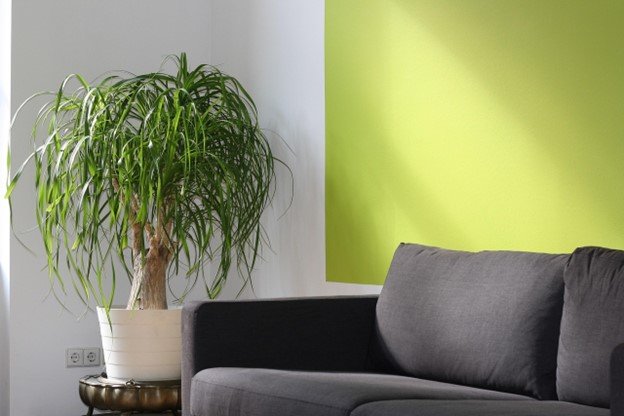ADHD Coaching Techniques
ADHD coaching techniques changed how I help clients, and honestly, they changed how I see ADHD. Right away: I’m a coach who’s seen people go from “I can’t even start” to “I just finished that project” (yes, really). Wait , no, actually, it didn’t look like magic. It looked like small steps, clearer plans, and a few smart tricks that fit each person’s brain.
One client (I’ll call her “M.”) used to say she had an alarm clock for everything, except the things that mattered. We tried something simple: break a task into a tiny first step, set a 15-minute timer, and use a quick reward after. Two weeks later she was finishing tasks she had been avoiding for months. That’s one example of how focused ADHD coaching techniques work in the real world (and why I love this work).
Research backs this up: coaching aimed at planning, time management, and goal setting can improve day-to-day functioning and quality of life for people with ADHD.

Problem Identification
Most people who arrive at ADHD coaching , whether they’re students, working professionals, parents, or entrepreneurs , don’t struggle because they “don’t know what to do.” In fact, most of my clients can tell me exactly what they should be doing. The real challenge? Activating that intention and turning it into structured action.
This is where ADHD coaching techniques become essential. We’re not just dealing with procrastination or “bad habits.” We’re working with executive function gaps , difficulty initiating, planning, organizing, shifting between tasks, regulating emotions, and staying engaged long enough to complete what truly matters.
Here are the most common obstacles I see as an ADHD coach:
ADHD Looks Different for Everyone
Two clients can have the same diagnosis but completely different needs. One may be paralyzed by starting tasks, another overwhelmed by finishing them. That means coaching must be tailored , not templated.
Motivation Isn’t the Problem — Activation Is
Many ADHD adults say, “I wanted to do it… I just didn’t move.” Traditional motivation techniques don’t work unless they bridge intention and execution through small action triggers, external accountability, or reward-based systems.
Executive Function Breakdown
Planning, organizing, prioritizing , these are not basic skills for the ADHD brain. Without structured guidance, clients get stuck in loops of overthinking, jumping between tasks, or shutting down completely.
Emotional Dysregulation Sabotages Progress
Even if you have a great plan in place, just one moment of shame, frustration, or self criticism can undermine your momentum in an instant. That is why effective ADHD coaching must address emotional reframing and self-compassion strategies, not just simply productivity hacks.
Resistance to Rigid Systems
Many clients reject traditional planning systems. Not because they don’t care , but because those systems don’t match the ADHD brain’s need for flexibility, creativity, and variety. Coaching has to adapt with the client’s natural rhythms, not against them.
Inconsistent Progress Feels Like Failure
ADHD rarely progresses in a straight line. Good days and shutdown days both happen. Without resilience frameworks, clients assume inconsistency means failure , and they quit right before real change anchors in.
These patterns are exactly why ADHD coaching is not about “fixing” people , it’s about building techniques that align with how the ADHD brain functions, instead of constantly fighting against it.

Real Client Examples & Entry Into ADHD Coaching Techniques
When people hear the term “ADHD coaching,” many imagine motivational speeches or someone telling them to “just get organized.” That’s not what real coaching looks like. Real ADHD coaching happens in the quiet, sometimes messy middle , the space between “I want to do it” and “I actually did it.”
Let me give you a few anonymized, real-life examples from past clients to ground this in reality:
Client Story #1 — The Professional Who Couldn’t Start Anything
Profile: Tech employee in California, mid-30s, constantly anxious about unfinished tasks.
He told me, “I open my laptop, feel the weight of everything I haven’t done, and then I just… freeze.”
Technique Introduced:
➡ “Micro-starts” + Body Doubling Sessions
Instead of planning his day like productivity books suggest, we focused on starting for just 5 minutes while I stayed on a virtual call with him. No pressure to finish , just to begin. That body presence, even virtual, created enough gentle accountability to activate his brain.
Outcome:
After two weeks, he messaged: “I finished three tasks I’ve been stuck on for months. The weird thing? Starting felt less scary when it wasn’t just me in my head.”
Client Story #2 — The College Student With Too Many Systems
Profile: Student, ADHD diagnosis since childhood, drowning in planners, Pomodoro apps, Notion dashboards , but none actually used.
Technique Introduced:
➡ “One Visible System Rule”
We threw away digital complexity and picked one physical board in her room, visible at all times. The only rule: tasks live where her eyes naturally land, not where productivity trends say they should live.
Outcome:
For the first time, she said: “I didn’t forget what I needed to do because it was literally in front of my face. I think I was hiding behind digital tools instead of actually making tasks visible.”
Client Story #3 — The Emotional Shutdown Loop
Profile: Entrepreneur with ADHD , high energy, but crashes emotionally when hitting a setback.
Technique Introduced:
➡ Failure Reframing + Reward-Based Micro Goals
Instead of pushing through every crash, we implemented controlled recovery breaks + reframing questions like, “What did I learn from this attempt?” Every completed micro-goal triggered a self-selected reward (like stepping outside, short music break, etc.).
Outcome:
He told me, “Before, one bad moment killed my whole day. Now, I recover in 15 minutes instead of 5 hours.”

Framework of ADHD Coaching Techniques
ADHD coaching is not about motivation quotes or forcing routines. Real coaching combines external structure, emotional regulation strategies, strengths-based activation, and flexible task design,all tailored to how the ADHD brain actually functions.
Below is the core framework I use with clients inside Heal&Thrive coaching sessions:
Technique Category 1: External Structure & Visibility Systems
Why it matters:
People with ADHD don’t struggle with knowing what to do , they struggle with holding tasks in working memory long enough to act. That’s why tasks must be made visible, external, and hard to ignore.
Coaching Techniques in this Category:
- The Only Visible System Rule — work on one visible board or to-do list instead of many apps.
- Body Doubling Sessions — generate accountability through a space of shared focus.
- Trigger Placement — placing visual cues (like sticky notes or timers) placed exactly where your attention would go.
- Environmental Activation Layout — set up your office space so that the task is clear, the most obvious next action.
Coaching Insight: ADHD doesn’t respond well to internal reminders , it responds to external prompts that interrupt autopilot.
Technique Category 2: Strengths-Based Activation (Instead of Forcing Discipline)
Why it matters:
ADHD brains are interest-based, not priority-based. Most “productivity systems” fail because they rely on logic and urgency , but activation happens when emotion, curiosity or novelty is tapped.
Coaching Techniques in this Category:
- Micro-Starts (5-Minute Initial Activation)
- Gamified Check-ins , tracking progress with small dopamine hits (emoji boards, token rewards, visible streaks).
- Choice-Based Activation , offering two micro-options instead of one direct instruction (“Do you want to start by writing a title or just opening the file?”).
- Task Emotional Labeling , asking “Which part feels heavy? Which part feels interesting?” to activate curiosity.
Coaching Insight: When interest is activated, task initiation happens naturally without forcing.
Technique Category 3: Emotional Regulation & Failure Recovery Loops
Why it matters:
Too many ADHD shutdowns are not due to laziness; emotional overstimulation, shame cycles, and perfection paralysis contribute to the shutdowns. Coaching is fast recovery loops, not pressure.
Coaching Techniques in this Category:
- Pre-Programmed Recovery Breaks , 5–15 minute reset rituals to prevent full shutdown.
- Failure Reframing Questions , (“What did this attempt teach me? What worked even slightly?”)
- Compassion-Based Progress Tracking , replacing “perfect or failure” mindset with incremental wins board.
- Emotional Debriefing Sessions , utilizing guided refelction rather than self-blame.
Coaching Insight: Progress when living with ADHD is less about consistency and more about how quickly you recover emotionally after a disruption.
Technique Category 4: Flexible Planning (Non-Linear Time Management for ADHD)
Why it matters:
Time-blocking assumes a linear focus. ADHD brains work in energy waves , coaching introduces fluid planning systems designed to adapt.
Coaching Techniques in this Category:
- Energy Mapping Instead of Scheduling , planning based on energy peaks, not time slots.
- 2-Phase Work Cycles , Activation Phase (messy start, no pressure) , Structure Phase (refine and finish).
- “Good Enough” Completion Thresholds , redefining done to bypass perfection freeze.
- Floating Priority Lists , tasks float in priority layers instead of fixed deadlines.
Coaching Insight: When planning is flexible, we will engage momentum to replace pressure and tasks will not feel like traps.
What Real Progress Looks Like in ADHD Coaching
Triggers are getting things done by acts of perfect consistency, or acting on every single task in some to-do list.It shows up in small cognitive shifts , subtle but powerful changes that happen inside real sessions.
Most clients enter coaching stuck in patterns like overwhelm, task paralysis, shame spirals, or all-or-nothing bursts of energy. They either push hard until burnout or avoid tasks completely , and both come with heavy self-criticism.
Here’s how we measure real transformation:
- Faster task entry → instead of overthinking, clients say “I’ll just open it” and get started.
- Shorter recovery time → missing a task no longer leads to a 3-day shame spiral.
- Micro-wins are more apparent→ clients see progress without waiting for someone else to tell them.
- Language changes from shame to curiosity→ Clients start asking, “Why am I like this?” and to “What tiny step would make this easier?”
- Techniques embed themselves naturally→ clients start to use tiny activation tools intuitively, instead of pursuing large hacks for productivity.
- Energy becomes steadier → no more burnout cycles followed by shutdown; there’s a new middle ground.
In sessions, we don’t just “fix productivity.” We rebuild self-trust, reframe how the brain interprets effort, and create a gentle, sustainable rhythm of action. Real progress is when a client catches themselves before a spiral and chooses a new micro-action , not because I told them, but because the new pattern has finally clicked.
How ADHD Coaching Creates Sustainable Change
ADHD coaching is not a quick fix or a magic productivity hack. It’s a methodical way of finding how your brain really works and making small, consistent adjustments that compound, with persistence, over time. Through tailored techniques , whether it’s body doubling, micro-activation sprints, flexible planning, or emotional recovery loops , clients gradually develop a rhythm of action, self-trust, and resilience.
At Heal&Thrive, the goal isn’t just to help you complete tasks. It’s helping you to adjust how you think about and respond to challenges, observe micro-progress, and incorporate strategies until they are second nature. The real change occurs when you move ADHD into a strength you can use because it is a neurodiverse strength, rather than a barrier.
Take the Next Step — Your Personalized ADHD Toolkit
Ready to see these changes in your own life? Start by downloading our free guide: “5 Mini ADHD Coaching Techniques You Can Apply Today.” Inside, you’ll find step-by-step exercises to jumpstart focus, improve task initiation, and regain momentum , all designed for ADHD brains.
And if you’re ready for a deeper transformation, our personalized coaching sessions guide you through every technique, tailored specifically to your strengths, challenges, and lifestyle.
Download the free guide now and schedule your first session with a Heal&Thrive ADHD coach.
